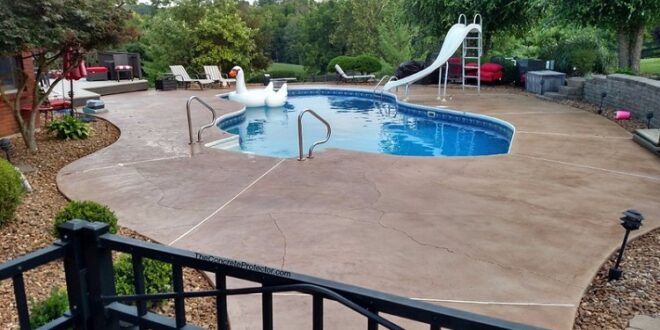A swimming pool is a luxurious oasis in your backyard, providing endless hours of relaxation and fun. Over time, however, the constant exposure to chemicals, weather elements, and regular usage can take a toll on your pool’s surface, leaving it worn, stained, and rough. Enter pool resurfacing – a transformative process that breathes new life into your pool and restores its beauty. In this comprehensive guide, we will explore the ins and outs of pool resurfacing, from understanding the signs that it’s time to resurface, to the different resurfacing options available, and the benefits of investing in this revitalizing endeavor.
Recognizing the Signs
Before embarking on a pool resurfacing project, it’s crucial to recognize the signs that your pool is in need of a makeover. Common indicators include cracks, chips, and peeling surfaces, which not only compromise the pool’s aesthetics but can also lead to leaks and other structural issues. Additionally, stubborn stains, rough textures, and excessive water loss may signify the need for resurfacing. Regular inspections and maintenance can help you identify these signs early on, allowing you to take proactive measures and extend the lifespan of your pool.
Resurfacing Options
When it comes to pool resurfacing, you have several options to choose from, each with its own advantages and considerations. The most popular resurfacing materials include plaster, pebble finishes, and tile. Plaster is a cost-effective choice, providing a smooth and classic appearance. Pebble finishes, on the other hand, offer a more natural look, enhanced durability, and a textured surface that can resist stains and be more slip-resistant. Tiles offer endless design possibilities, allowing you to create stunning patterns and mosaics, and they are highly resistant to stains and damage. Each option has its own maintenance requirements and lifespan, so it’s important to weigh the pros and cons before making a decision.
The Resurfacing Process
Once you’ve decided on the resurfacing material, it’s time to dive into the process itself. Pool resurfacing typically involves draining the pool, preparing the surface by removing the old material, repairing any cracks or structural issues, and applying the new resurfacing material. Hiring a professional pool contractor is highly recommended, as they have the expertise, equipment, and knowledge to ensure a seamless and long-lasting resurfacing job. They will guide you through the entire process, from selecting the right material to overseeing the application and curing stages.
Benefits of Pool Resurfacing
Investing in pool resurfacing offers numerous benefits beyond just enhancing the visual appeal of your pool. A properly resurfaced pool provides a smoother surface, reducing the risk of abrasions and scratches. It can also improve the pool’s hygiene by eliminating rough patches that can harbor bacteria and algae. Resurfacing can help restore the pool’s structural integrity, preventing leaks and costly repairs down the line. Moreover, a fresh pool surface can transform the overall ambiance of your outdoor space, creating a welcoming and luxurious environment for your family and friends to enjoy.
Conclusion
Pool resurfacing Orlando breathes new life into your beloved swimming pool, offering a fresh start and reviving its beauty. By recognizing the signs, exploring the resurfacing options, and understanding the process, you can make an informed decision to rejuvenate your pool and ensure years of enjoyment in your backyard oasis.
 HammBurg Be informed with latest news, reviews, entertainment, lifestyle tips, and much more.
HammBurg Be informed with latest news, reviews, entertainment, lifestyle tips, and much more.




